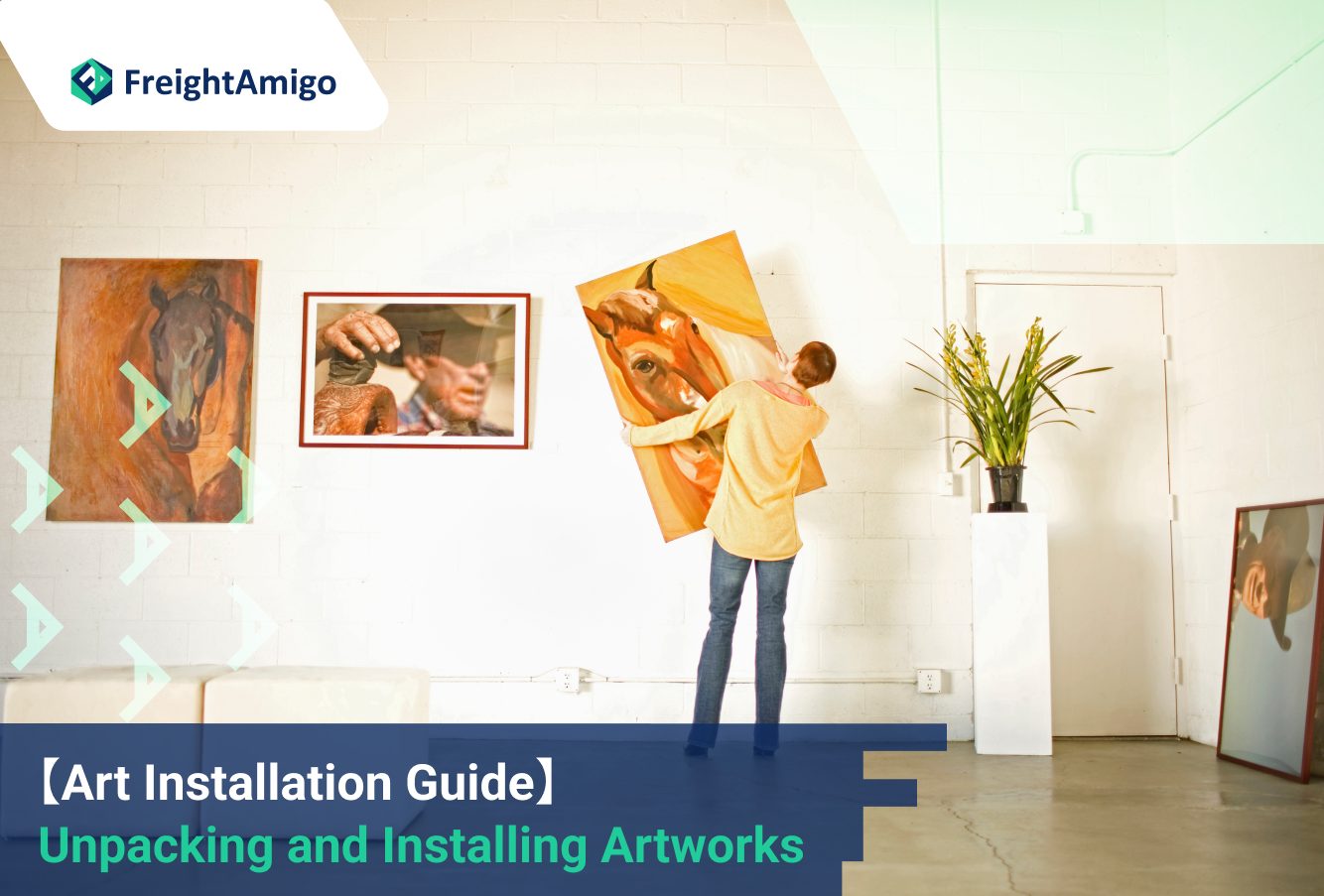Latest update on 23 February, 2024 by Maya Wong – Marketing Analyst at FreightAmigo
Art installation is a crucial part of presenting artwork, whether in private spaces, galleries or exhibitions. It involves careful handling, positioning and display techniques to ensure the safety and aesthetic presentation of the artwork. This guide provides a comprehensive overview of the key considerations and procedures for unpacking and installing art.
Want to compare the best Express, Air Freight, Sea Freight, Rail Freight & Trucking rates so as to have better control on cost?
Understanding Art Installation
Art installation is an art form. It involves creating a dialogue between the artwork, the space it inhabits, and the viewer. Understanding the intricacies of art installation can significantly enhance the way you present and perceive art.
Unpacking Artwork
The first step in the art installation process is to unpack the artwork. This requires careful attention to prevent any damage. To unpack the artwork smoothly and safely, follow these steps:
- Prepare the unpacking area:To unpack the artwork, make sure you have a clean and spacious area. Remove any objects that could potentially harm the artwork.
- Use the right tools:Use a box cutter or a knife to open the box. Be very gentle to avoid damaging the artwork inside.
- Remove the protective layers:Artworks are usually wrapped in bubble wrap or foam for protection during transit. Carefully remove these layers without using any sharp tools.
- Inspect the artwork:Once all the protective layers are removed, inspect the artwork for any damage. If you notice any, contact the seller or shipper immediately.
Preparing for Art Installation
Before you start the installation process, there are a few things you need to consider:
- Positioning:Decide where you want to install the artwork. Consider the size, style, and color of the artwork and how it will interact with the surrounding space.
- Lighting:Lighting plays a crucial role in showcasing the artwork. Natural light can enhance the colors of the artwork, but be careful as excessive sunlight can cause damage. Using adjustable track lighting is a good option as it allows you to control the intensity and direction of the light.
- Height:The general rule is to hang the artwork at eye level. However, this can vary depending on the height of the ceiling and the size of the artwork.
Art Installation Process
The installation process involves physically mounting the artwork on the wall. Here’s a step-by-step guide on how to do it:
- Measure and mark:Measure the height at which you want to hang the artwork and mark the spot on the wall.
- Choose the right hardware:The type of hardware you need depends on the size and weight of the artwork and the kind of wall you have. For most artworks, a nail or a picture hook works fine. For heavier pieces, you may need to use wall plugs or screws.
- Install the hardware:Install the nail or hook at the marked spot. Make sure it is secure and can support the weight of the artwork.
- Hang the artwork:Carefully hang the artwork on the nail or hook. Use a spirit level to ensure it is hanging straight.
Post-Installation Care
Once the artwork has been installed, it is important to maintain its condition. Additionally, it is crucial to avoid exposing the artwork to extreme temperatures or humidity. To keep it clean, regularly dust the artwork with a soft cloth.
Conclusion
Art installation is a crucial process that can significantly impact the way an artwork is perceived. Proper unpacking, positioning, and installation can enhance the presentation of the artwork and ensure its longevity. Understanding the art installation process can help artists, gallery owners, and art enthusiasts present and appreciate art in the best way possible.
Whether a museum exhibit or corporate collection, discover how FreightAmigo customized solutions and services streamline delivery and installation for seamless results.
If you have any inquiries on logistics/supply chain, feel free to contact FreightAmigo now:
Chat with us online | Hotline: +852 28121686 | WhatsApp: +852 27467829









































